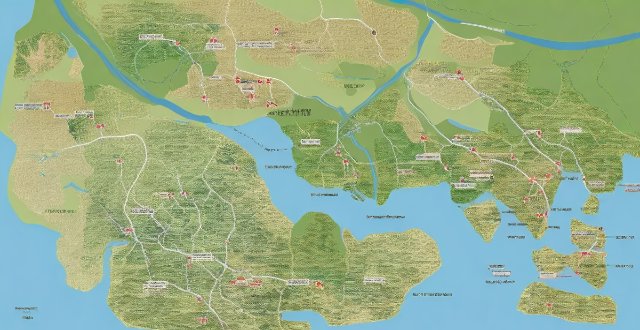Global warming has significantly influenced agricultural practices and food security worldwide, affecting areas such as altered climate conditions, pest and disease management, crop variety and production, and food security concerns. These changes include irregular rainfall patterns leading to droughts and floods, water scarcity, extreme temperature fluctuations causing heat waves and cold spells, increased pest infestations and new pest species introduction, elevated disease risks, changes in crop yields and shifting production regions, altered planting seasons, price volatility, supply disruptions, nutrient depletion, and loss of biodiversity. Farmers must adapt to these new realities to ensure sustainable food systems for the future.

Global Warming's Impact on Agricultural Practices and Food Security
Global warming has significantly influenced agricultural practices and food security worldwide. The following are the key ways in which this phenomenon has affected these areas:
Altered Climate Conditions
Changes in Precipitation Patterns
- Irregular Rainfall: Unpredictable rainfall patterns have led to both droughts and floods, affecting crop yields and quality.
- Water Scarcity: Reduced water availability makes it challenging for farmers to irrigate their crops, leading to decreased productivity.
Extreme Temperature Fluctuations
- Heat Waves: Intense heat can damage crops and reduce their growth rate, ultimately affecting food production.
- Cold Spells: Sudden drops in temperature can also harm crops, especially those that are sensitive to colder climates.
Pest and Disease Management
Increased Pest Infestations
- Pest Population Growth: Warmer temperatures allow pests to reproduce more quickly, leading to increased infestations and damage to crops.
- New Pest Species: Global warming introduces new pest species to regions where they previously did not exist, posing additional threats to local agriculture.
Elevated Disease Risks
- Disease Outbreaks: Warm, humid conditions foster the spread of plant diseases, further reducing crop yields and quality.
- Resistance Issues: The overuse of pesticides and fungicides can lead to resistance among pests and diseases, making them harder to control.
Crop Variety and Production
Changes in Crop Yields
- Yield Variability: Some crops may experience increased yields due to higher levels of carbon dioxide, while others suffer from reduced output due to stress factors like heat and drought.
- Shifting Production Regions: As certain regions become less suitable for particular crops, there is a shift towards growing different types of crops or moving production to more favorable areas.
Altered Planting Seasons
- Earlier Planting Times: Farmers may need to adjust their planting schedules to account for changing weather patterns and ensure optimal growing conditions.
- Multiple Harvests: In some cases, global warming allows for multiple harvests within a single year, potentially increasing overall production but also requiring more resources and labor.
Food Security Concerns
Price Volatility
- Fluctuating Costs: Changes in crop yields and production costs can lead to price volatility, making it difficult for consumers to access affordable food.
- Supply Disruptions: Extreme weather events and other factors related to global warming can disrupt food supply chains, causing shortages and price spikes.
Nutrient Depletion
- Soil Health Decline: Changes in precipitation patterns and temperature can negatively impact soil health, reducing its nutrient content and affecting plant growth.
- Loss of Biodiversity: The loss of diverse plant species due to global warming can limit the variety of nutrients available in our diets, contributing to malnutrition issues.
In conclusion, global warming has had far-reaching effects on agricultural practices and food security. From altered climate conditions and pest management challenges to changes in crop varieties and production methods, farmers must adapt to these new realities to ensure sustainable food systems for the future.